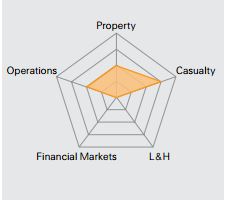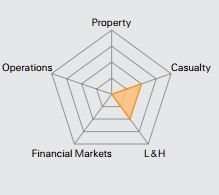Turmoil in emerging markets, increased localization of internet networks within country borders and financial repression are some of the risks identified in this year's Swiss Re SONAR "New emerging risk insights" report.
The report offers insights into emerging risks, those newly developing or evolving risks whose potential impact and scope are not yet fully acknowledged.
The report also highlights human-induced earthquakes, mass migration, a crisis of trust in institutions, and technology-related topics, such as the rise of precision medicine and distributed energy generation.
Anticipating future risks
"Risk management is not just about managing risks in the present. It is about anticipating future ones to make sure we will be in a position to deal with them," says Patrick Raaflaub, Swiss Re's group chief risk officer. "These risks may only fully reveal themselves to future generations. That doesn't mean that we shouldn't act today to reduce uncertainty and alleviate their burden."
The identified risks are relevant to life and non-life insurance areas and are presented with the goal of helping industry players prepare for new scenarios.
Here are the 21 emerging risks that Swiss Re says could have the biggest impact on the insurance industry and the wider global economy:
 Traditionally, insurers absorbed some of the risks associated today with the sharing economy into their general risk pool. (AP Photo)
Traditionally, insurers absorbed some of the risks associated today with the sharing economy into their general risk pool. (AP Photo)
1. Risks of the sharing economy
Medium impact | >3 years
While the sharing economy may provide new business opportunities for the insurance industry, it also brings legal risks and challenge to adequately model and price the assocated risks. For insurers, the rise and increasing sophistication of the sharing economy raises questions regarding the appropriate form of coverage.
The sharing economy has also reached the very foundations of insurance. Peer-to-peer insurance is gaining traction — a model that is similar to traditional mutual insurance, but takes it to another level by using new technology. Peer-to-peer insurance raises questions of adverse and self-selection, pricing and reserving adequacy, and its ability to cope with catastrophic events.
Potential impacts:
- Traditional insurers may face pressure from new players that can access new client segments through a sharing economy set-up.
- Insufficient loss experience could expose insurers to inadequate pricing models for the "hybrid risks" posed by the sharing economy.
 Opposition supporters wave flags during an opposition protest in Belgrade, Serbia, April 30, 2016. Thousands of opposition supporters have protested in front of the Serbian state electoral commission what their leaders are saying is widespread vote rigging by the ruling populists. (Photo: Darko Vojinovic/AP Photo)
Opposition supporters wave flags during an opposition protest in Belgrade, Serbia, April 30, 2016. Thousands of opposition supporters have protested in front of the Serbian state electoral commission what their leaders are saying is widespread vote rigging by the ruling populists. (Photo: Darko Vojinovic/AP Photo)
2. Crisis of trust
Medium impact | 0-3 years
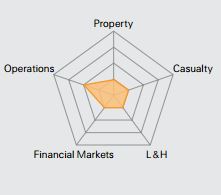
While there are many reasons for the decline in trust, at least part of it is because of rising inequality, a sense of disenfranchisement and rising job insecurity, resulting in a growing alienation between the elites and middle classes.
Potential impacts:
- A decline of trust in insurance in general may hurt business.
- A more-predatory attitude may lead to an increased number of unwarranted claims.
 Women queue as they wait for distribution of hygiene kits at the premises of the old international airport which is used as a temporary camp in Athens, on May 3, 2016. Germany and some other EU countries are planning to ask the European Commission for an extension of border controls within the Schengen passport-free travel zone for another six months because they fear a new wave of migrants. (Photo: Yorgos Karahalis/AP Photo)
Women queue as they wait for distribution of hygiene kits at the premises of the old international airport which is used as a temporary camp in Athens, on May 3, 2016. Germany and some other EU countries are planning to ask the European Commission for an extension of border controls within the Schengen passport-free travel zone for another six months because they fear a new wave of migrants. (Photo: Yorgos Karahalis/AP Photo)
3. Mass migration
Low impact | 0-3 years
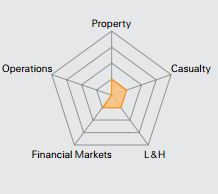
Migration pressures across borders will likely continue to increase due to a number of unresolved, protracted crises in many regions of the world.
Potential impacts:
- While this is a major issue for society as a whole, Swiss Re expects only minor impacts on the insurance industry.
- Variations in populations because of a massive inflow of migrants may affect insurance by shifting the characteristics of the insured, such as life expectancy, immunization/vaccination status, prevalence of specific diseases, lifestyle choices or product preferences.
- The risk exposure of buildings used as refugee accommodation might need to be reassessed because higher-than-expected occupancy. The insurance industry could offer expertise to ensure that adequate loss prevention measures are established.
 Bahraini anti-government protesters burn old furniture during clashes with riot police in Daih, Bahrain, March 14, 2016. Bahraini police detained a political activist and her year-old son on Monday in an operation that came on the fifth anniversary of Saudi and Emirati soldiers putting down Arab Spring-inspired protests in the tiny island kingdom. (Photo: Hasan Jamali/AP Photo)
Bahraini anti-government protesters burn old furniture during clashes with riot police in Daih, Bahrain, March 14, 2016. Bahraini police detained a political activist and her year-old son on Monday in an operation that came on the fifth anniversary of Saudi and Emirati soldiers putting down Arab Spring-inspired protests in the tiny island kingdom. (Photo: Hasan Jamali/AP Photo)
4. Viral leaderless mobilization
Low impact | 0-3 years
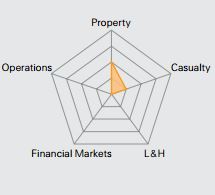
Rallying people is easier in a social environment where distrust towards governments, corporate institutions and organizations is widespread, and individual frustration, youth unemployment and disillusionment are high. Particularly the young and the digitally savy are easily mobilized. But also among the broader middle class, trust in the ability of elites to govern is evaporating fast, fueling a general sense of distrust and alienation from the elite. This may result in more and more violent riots and demonstrations that are difficult to contain, which in turn could result in more property losses.
Potential impacts:
- More property and business interruption losses from riots are to be expected.
- Campaigns that hurt a company’s reputation and lead to customer and stock valuation losses, with liability suits by shareholder activists as secondary effects.
- Manufacturers and distributers of smartphones and apps developers may be held liable for violent events from viral leaderless mobilization, resulting in more liability claims.
 Youth march during a protest against proposed changes to France's work week and layoff practices, in Paris, Tuesday, April 5, 2016. Socialist President Francois Hollande's government, desperately trying to lower unemployment, says the bill will encourage hiring, especially of young people. But unions and students say it erodes hard-fought worker protections. The banner reads: "Labor law. Out". (Photo: Christophe Ena)
Youth march during a protest against proposed changes to France's work week and layoff practices, in Paris, Tuesday, April 5, 2016. Socialist President Francois Hollande's government, desperately trying to lower unemployment, says the bill will encourage hiring, especially of young people. But unions and students say it erodes hard-fought worker protections. The banner reads: "Labor law. Out". (Photo: Christophe Ena)
5. The future of work
Medium impact | >3 years
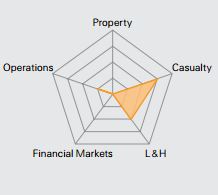
While the fourth industrial revolution will create new jobs and transform work qualitatively, a high portion of paid labor jobs is also expected to vanish. This will affect the middle classes, and ultimately the insurance customer base: if people have no jobs they cannot buy insurance.
Potential impacts:
- The digital industrial revolution will increase demand for information and communication technology and corresponding insurance products. Mass unemployment could result in a shrinking customer base for personal insurance and a reduced portfolio for employers’ liability if newly created jobs are not outweighing the loss.
- Insurance might find new opportunities in supporting the growth of a new informal economy.
 Dr. Michelle Griffin, a plastic research fellow, demonstrates for photographs seeding stem cells onto a synthetic polymer ear at her research facility in the Royal Free Hospital in London, March 31, 2014. In a north London hospital, scientists are growing noses, ears and blood vessels in the laboratory in a bold attempt to make body parts using stem cells. (Photo: Matt Dunham/AP Photo)
Dr. Michelle Griffin, a plastic research fellow, demonstrates for photographs seeding stem cells onto a synthetic polymer ear at her research facility in the Royal Free Hospital in London, March 31, 2014. In a north London hospital, scientists are growing noses, ears and blood vessels in the laboratory in a bold attempt to make body parts using stem cells. (Photo: Matt Dunham/AP Photo)
6. Precision medicine
Medium impact | >3 years
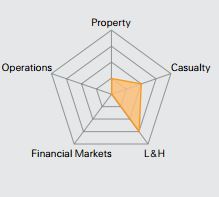
Potential impacts:
- New data types and new data sources will create information management challenges, and data protection and transfer might become a bigger liability issue.
- For insurers, personalized diagnostics and therapies may increase costs for health insurance in the mid-term, but could reduce overall health care expenditure in the long-term by increasing treatment effectiveness and efficiency.
- With an increase of the predictive value of personalized genomic data, the insurance industry will be increasingly faced with anti-selection in life insurance and an increased lapse risk. Ultimately, it might even lead to a creeping erosion of the solidarity principle on which insurance is based.
 Who does and does not benefit from taking supplements of omega-3 fatty acids, the good oils found in fish such as salmon, tuna and sardines? (Photo: Ted S. Warren/AP Photo)
Who does and does not benefit from taking supplements of omega-3 fatty acids, the good oils found in fish such as salmon, tuna and sardines? (Photo: Ted S. Warren/AP Photo)
7. Nutraceuticals
Low impact | 0-3 years
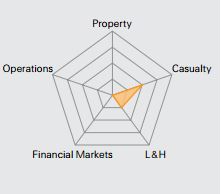
The global market for nutraceuticals is expanding rapidly and is expected to reach $278 billion by 2021, from $172 billion in 2014.
Potential impacts:
- How should nutraceuticals be regulated and classified? The answer has an impact on the corresponding insurance covers.
- The novelty of the products and the lack of consistent rules make underwriting nutraceuticals challenging for re/insurers.
- Claims can be unique and complicated because of the composition of the products, labelling and advertising issues, lack of clarity on health effects and difficulty demonstrating causation.
 In this photo provided by the Centers for Disease Control and Prevention, a feeding female Anopheles stephensi mosquito crouching forward and downward on her forelegs on a human skin surface, in the process of obtaining its blood meal through its sharp, needle-like labrum, which it had inserted into its human host. A powerful new technology holds the promise of rapidly altering genes to make malaria-proof mosquitoes, eliminate their Zika-carrying cousins or wipe out an invasive species, but advisers to the government say these so-called "gene drives" aren't ready to let loose in the wild just yet. (Photo: James Gathany/CDC via AP Photo)
In this photo provided by the Centers for Disease Control and Prevention, a feeding female Anopheles stephensi mosquito crouching forward and downward on her forelegs on a human skin surface, in the process of obtaining its blood meal through its sharp, needle-like labrum, which it had inserted into its human host. A powerful new technology holds the promise of rapidly altering genes to make malaria-proof mosquitoes, eliminate their Zika-carrying cousins or wipe out an invasive species, but advisers to the government say these so-called "gene drives" aren't ready to let loose in the wild just yet. (Photo: James Gathany/CDC via AP Photo)
8. Gene drives
Medium impact | >3 years
Gene drives are genetic systems that circumvent the rules of normal sexual reproduction and greatly increase the odds that a particular trait will be passed on to offspring.
Gene drives have the potential to fix difficult biological problems. For example, they could be applied to genetically modify mosquitoes and other disease vectors so they can no longer transmit diseases such as malaria, dengue fever or the Zika virus. They could also be used to exterminate invasive species or to break the herbicide resistance of common weeds by altering their genetic make-up.
Gene drives are a very powerful tool which could get out of control. Scientists have begun to call for increased regulation, but international governance is still lacking.
Potential impacts:
- Huge upside potential, but also uncertainties, mainly regarding the environmental impact.
- For insurers, a commercial application of gene drives could trigger genetically modified organism-related losses, such as under the EU’s Environmental Liability Directive.
 In this Jan. 18, 2010 file photo, steaks and other beef products are displayed for sale at a grocery store in McLean, Va. The meat industry is seeing red over the dietary guidelines. The World Health Organization’s cancer agency said on Oct. 26, 2015, that processed meats such as ham and sausage can lead to colon and other cancers, and red meat is probably cancer-causing as well. (Photo: J. Scott Applewhite/AP Photo)
In this Jan. 18, 2010 file photo, steaks and other beef products are displayed for sale at a grocery store in McLean, Va. The meat industry is seeing red over the dietary guidelines. The World Health Organization’s cancer agency said on Oct. 26, 2015, that processed meats such as ham and sausage can lead to colon and other cancers, and red meat is probably cancer-causing as well. (Photo: J. Scott Applewhite/AP Photo)
9. Meat consumption
Medium impact | >3 years
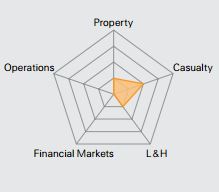
Further changes in dietary patterns are to be expected, with some implications for the farming industry and all stakeholders in the associated value chain.
Potential impacts:
- Large-scale dietary shifts would have a significant economic effect on livestock farmers and the entire associated supply chain, including insurance.
- Class actions against stakeholders in the meat value chain are possible, similar to those that already shook the tobacco industry.
 People check an electronic stock indicator of a securities firm in Tokyo. (Photo: Shizuo Kambayashi/AP Photo)
People check an electronic stock indicator of a securities firm in Tokyo. (Photo: Shizuo Kambayashi/AP Photo)
10. The great monetary experiment
High impact | 0-3 years
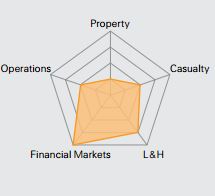
Potential impacts:
- Negative interest rates will further undermine the conventional business model of the insurance industry, particularly life insurers, and pension funds.
- M&A activity may become more intense as insurance companies partner in order to increase economies of scale and retain earnings power.
 In this Aug. 27, 2015 file photo, a man walks past a bank's electronic board showing the share index around the world at Hong Kong Stock Exchange. Investors have yanked $40 billion from emerging-market stocks this year, a record pace of withdrawals, as a slowdown in China has hammered companies that supply raw materials. (Photo: Vincent Yu/AP Photo)
In this Aug. 27, 2015 file photo, a man walks past a bank's electronic board showing the share index around the world at Hong Kong Stock Exchange. Investors have yanked $40 billion from emerging-market stocks this year, a record pace of withdrawals, as a slowdown in China has hammered companies that supply raw materials. (Photo: Vincent Yu/AP Photo)
11. Emerging market crises 2.0
High impact | 0-3 years
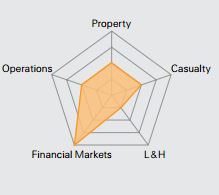
Excess supply of commodities along with the slowdown in economic growth in China have lowered commodity prices (e.g., oil, metals), stressing many emerging markets. This, along with a tightening bias to U.S. monetary policy, has led to net capital outflows from emerging markets for the second consecutive year in 2015.
Parallels have been drawn to the emerging market crises in the late 1990s, triggering fears of an “emerging market crisis 2.0.”
As exposure to emerging markets has grown over the past two decades, such effects are likely to be bigger than in the past.
Potential impacts:
- Political turmoil and riots may result in higher underwriting losses, especially in property, personal and commercial lines. Corporate defaults may produce credit losses, and interruptions to infrastructure projects would have adverse impacts on surety books.
- Large-scale investment losses in emerging markets may trigger lawsuits from shareholders, resulting in liability and Directors & Officers claims.
 An Indian woman uses her mobile phone as she waits for a bus in New Delhi, India, Sept. 27, 2015. Indian Prime Minister Narendra Modi envisions a "Digital India," where ubiquitous high-speed internet access will empower entrepreneurs to build software and other technology products that will raise the standard of living in a country where many households are still impoverished. (Photo: Tsering Topgyal/AP Photo)
An Indian woman uses her mobile phone as she waits for a bus in New Delhi, India, Sept. 27, 2015. Indian Prime Minister Narendra Modi envisions a "Digital India," where ubiquitous high-speed internet access will empower entrepreneurs to build software and other technology products that will raise the standard of living in a country where many households are still impoverished. (Photo: Tsering Topgyal/AP Photo)
12. Internet fragmentation
High impact | >3 years
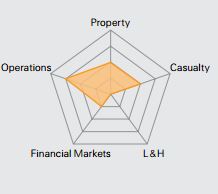
International negotiations are currently under way to agree on how the internet should be governed, but no consensus or international treaty has emerged yet. While the debate is still under way, there is a chance that disconnected national and regional nets will become more common. Such developments would increase IT costs and regulation and would hurt insurance companies operating across borders.
Potential impacts:
- Evolving regulation would increase operational risk and could trigger more liability claims (Directors & Officers, fidelity); it may also massively increase costs for setting up and maintaining separate legal structures.
- Technology companies, such as providers of cross-border cloud services, could see a disruption of their business model and might face liability suits from customers if they could no longer access data stored on cross-border servers.
 IBM's Chief Watson Security Architect Jeb Linton demonstrating to University of Maryland, Baltimore County student Lisa Mathews how to teach IBM's Watson the language of security, May 10, 2016, Baltimore. IBM will work with eight universities to train Watson for cyber security, so that the next generation of security professionals can user the power of "cognitive" technology to defend against cyber attacks. (Photo: Mitro Hood/IBM)
IBM's Chief Watson Security Architect Jeb Linton demonstrating to University of Maryland, Baltimore County student Lisa Mathews how to teach IBM's Watson the language of security, May 10, 2016, Baltimore. IBM will work with eight universities to train Watson for cyber security, so that the next generation of security professionals can user the power of "cognitive" technology to defend against cyber attacks. (Photo: Mitro Hood/IBM)
13. The FinTech risk landscape
Medium impact | >3 years
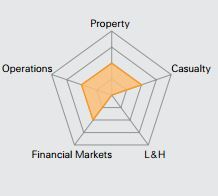
InsurTech has emerged as a niche within FinTech, offering innovative insurance solutions based on new technology platforms and software. Traditional financial services players have begun to embrace the trend while venture capitalists are financing numerous start-ups. FinTech thus poses possibly revolutionary risks to the business model and the internal management of established financial services players.
Increased exposure to cyber risks, but also the potential risk of a valuation bubble and issues around liability — for example in the case of artificial intelligence-based stock trading — make FinTech a tangible challenge for the insurance industry.
Potential impacts:
- Immature or badly protected technology platforms are considerably exposed to cyber risks.
- Badly implemented FinTech solutions leading to failures and losses may trigger liability claims by consumers, savers and investors.
 IBM Blockchain user interface designers, Dante Guintu, left and Andrea Lee, work on secure blockchain apps at IBM San Francisco on February 16, 2016. (Photo: George Nikitin/IBM)
IBM Blockchain user interface designers, Dante Guintu, left and Andrea Lee, work on secure blockchain apps at IBM San Francisco on February 16, 2016. (Photo: George Nikitin/IBM)
14. Blockchain risks
Medium impact | >3 years
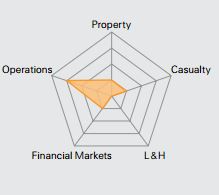
The blockchain could revolutionize industries where heavy documentation is needed, including the insurance sector where it could challenge the traditional underwriting value chain thanks to its potential for efficiency.
The blockchain remains vulnerable to cyber risks, though it seems very difficult to hack by conventional methods. In combination with encryption, it could also be used for criminal activities, such as remunerating hackers.
Regulators are seeing the blockchain as uncharted territory to be penetrated which could eventually result in over- or inadequate regulation, distorting and stifling the growth and application of the technology.
Potential impacts:
- The blockchain may undermine underwriting and the insurance value chain and could thus pose a challenge to traditional market players.
- Reliance on the blockchain in many walks of life may increase the exposure to cyber risks.
 IBM research data scientist Eric Clark explores wearable technologies that could help monitor and analyze biological data from study subjects on April 7, 2016, at IBM's T.J. Watson Research Center in Yorktown, N.Y. IBM and Pfizer are collaborating to create a first-of-a-kind remote monitoring system to support patients with Parkinson's disease. This non invasive, real-time approach to patient data will offer new insights into disease progression and treatment plans. By applying advanced analytics and machine learning to sensor data, the hope is to transform how neurological diseases are diagnosed and treated. (Photo: Jon Simon/IBM)
IBM research data scientist Eric Clark explores wearable technologies that could help monitor and analyze biological data from study subjects on April 7, 2016, at IBM's T.J. Watson Research Center in Yorktown, N.Y. IBM and Pfizer are collaborating to create a first-of-a-kind remote monitoring system to support patients with Parkinson's disease. This non invasive, real-time approach to patient data will offer new insights into disease progression and treatment plans. By applying advanced analytics and machine learning to sensor data, the hope is to transform how neurological diseases are diagnosed and treated. (Photo: Jon Simon/IBM)
15. Phoney data
Medium impact | >3 years
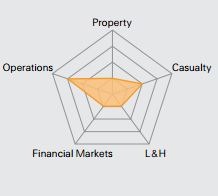
Intrusion into sensors and apps and the manipulation of data will be amplified with the adoption of the Internet of Things.
Potential impacts:
- Using manipulated or phoney data sets for insurance modelling may result in mispriced risks and unexpected claims.
- Data manipulation could exacerbate insurance fraud.
![]() Hackers and other cyber criminals are busy exploring how they could tap into the potentially highly profitable market of stealing and selling digital identities. (Photo: Shutterstock)
Hackers and other cyber criminals are busy exploring how they could tap into the potentially highly profitable market of stealing and selling digital identities. (Photo: Shutterstock)
16. Digital identities
Low impact | 0-3 years
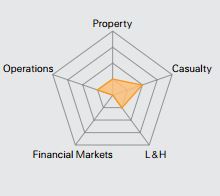
Hackers and other cyber criminals are busy exploring how they could tap into the potentially highly profitable market of stealing and selling digital identities, and the number of attempts to breach data of individuals, companies and governmental institutions has grown together with our increasing reliance on digital tools.
Potential impacts:
- Insurance lines that rely on personal data (e.g., health, life) are strongly exposed to manipulations of digital identities. Due diligence in data collection and investments in strong data protection will drive up costs for insurance companies.
- Restoring digital identities after a loss could involve costly legal battles which could have an impact on legal fees paid by insurance companies.
 Electricians Adam Hall, right, and Steven Gabert, install solar panels on a roof for Arizona Public Service company in Goodyear, Ariz. (Photo: Matt York/AP Photo)
Electricians Adam Hall, right, and Steven Gabert, install solar panels on a roof for Arizona Public Service company in Goodyear, Ariz. (Photo: Matt York/AP Photo)
17. Distributed energy generation
Medium impact | >3 years
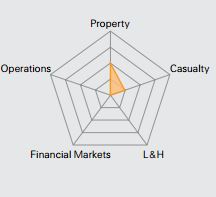
In a distributed energy set-up, millions of households will develop from consumers-only into energy producers. This will have far-reaching implications for our whole energy system, especially for power grids.
Potential impacts:
- For re/insurers, the move towards distributed energy production could be an opportunity to contribute to de-risking the new technologies.
- Smart grids entail significant cyber risks which should be taken into account while underwriting them.
- Economic pressure on traditional utility companies might result in reduced maintenance of legacy large-scale operations which could increase property risk exposure.

Joel Woelfel, front, a technician at the Oklahoma Geological Survey, prepares an in-ground container for a seismic monitor near Waynoka, Okla., March 22, 2016. In the rear is Jefferson Chang, an OGS seismologist. The OGS is installing 10 seismic stations in the area to monitor seismic activity. The OGS already has over 40 stations in the state. (Photo: Sue Ogrocki/AP Photo)
18. Human-induced earthquakes
Medium impact | 0-3 years
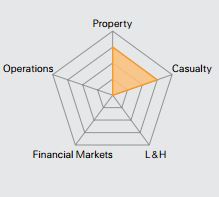
Losses arising from the rapidly rising number of human-induced seismic events are largely uninsured or fall into the deductible of traditional earthquake insurance products, which have been designed to protect against a total loss rather than damage arising from frequent small earthquakes.
Potential impact:
- There is an increasing likelihood for litigation/class actions against hydrofracking operators, with significant accumulation risks for re/insurers when events trigger claims on the property and on the casualty side.
 Mark DeRoche, a deck engineer with the Institute for Exploration, directs his crew to slowly raise "Argus," a remote vehicle submersible. (Photo: Jim Bovin/AP Photo)
Mark DeRoche, a deck engineer with the Institute for Exploration, directs his crew to slowly raise "Argus," a remote vehicle submersible. (Photo: Jim Bovin/AP Photo)
19. Seabed mining
Low impact | >3 years
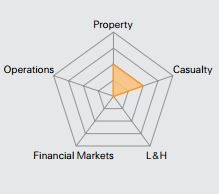
Scientists and environmental groups are raising concerns about the potential impact of seabed mining and deep sea mining on ecosystems that are very vulnerable to physical disturbance because of fragile habitats and extremely slow recovery rates.
Potential impact:
- Property and liability exposures of seabed mining activities could be significant, but are hard to estimate due to lack of experience and a potentially shifting regulatory environment.
 A pedestrian walks along the East Side Esplanade in an area beneath the FDR Drive just north of the Manhattan Bridge, left, Jan. 19, 2016, in New York. Lower Manhattan is expected to receive an additional $176 million in federal funding for a large-scale flood protection system that will eventually wrap from Montgomery Street in Chinatown, around the tip of the borough, and up through Battery Park City. The area shown in this photograph would be affected by the plan. (Photo: Kathy Willens/AP Photo)
A pedestrian walks along the East Side Esplanade in an area beneath the FDR Drive just north of the Manhattan Bridge, left, Jan. 19, 2016, in New York. Lower Manhattan is expected to receive an additional $176 million in federal funding for a large-scale flood protection system that will eventually wrap from Montgomery Street in Chinatown, around the tip of the borough, and up through Battery Park City. The area shown in this photograph would be affected by the plan. (Photo: Kathy Willens/AP Photo)
20. Geoengineering
Low impact | >3 years

Potential impact:
- Large-scale geoengineering has potentially huge liability exposures due to unintended side effects. However, it will be very difficult to establish whether a natural catastrophe stems from a man-made action or not, and it may even be impossible to establish liability in a legal sense.
 An estimated 4 to 12 million tons of plastic enter the ocean from land each year. (Photo: iStock)
An estimated 4 to 12 million tons of plastic enter the ocean from land each year. (Photo: iStock)
21. Ocean pollution from microplastics
Low impact | 0-3 years

Microplastics are tiny pieces of plastic which find their way to the ocean when cosmetics products such as facial scrubs or toothpaste, which contain them as scrubbers and abrasive beads, wash down the drain or when larger plastic objects break down in the seawater.
As plastics do not break down for many decades, the amount of microplastic in the oceans will continue to increase. Environmental groups have started advocating for a ban on microplastics, and regulation is beginning to catch up.
Potential impact:
- For the insurance industry, there could be implications for liability covers arising from product liability for the manufacturers of microplastics and various products containing them, and recall for polluted fish/seafood products.
© 2025 ALM Global, LLC, All Rights Reserved. Request academic re-use from www.copyright.com. All other uses, submit a request to [email protected]. For more information visit Asset & Logo Licensing.


